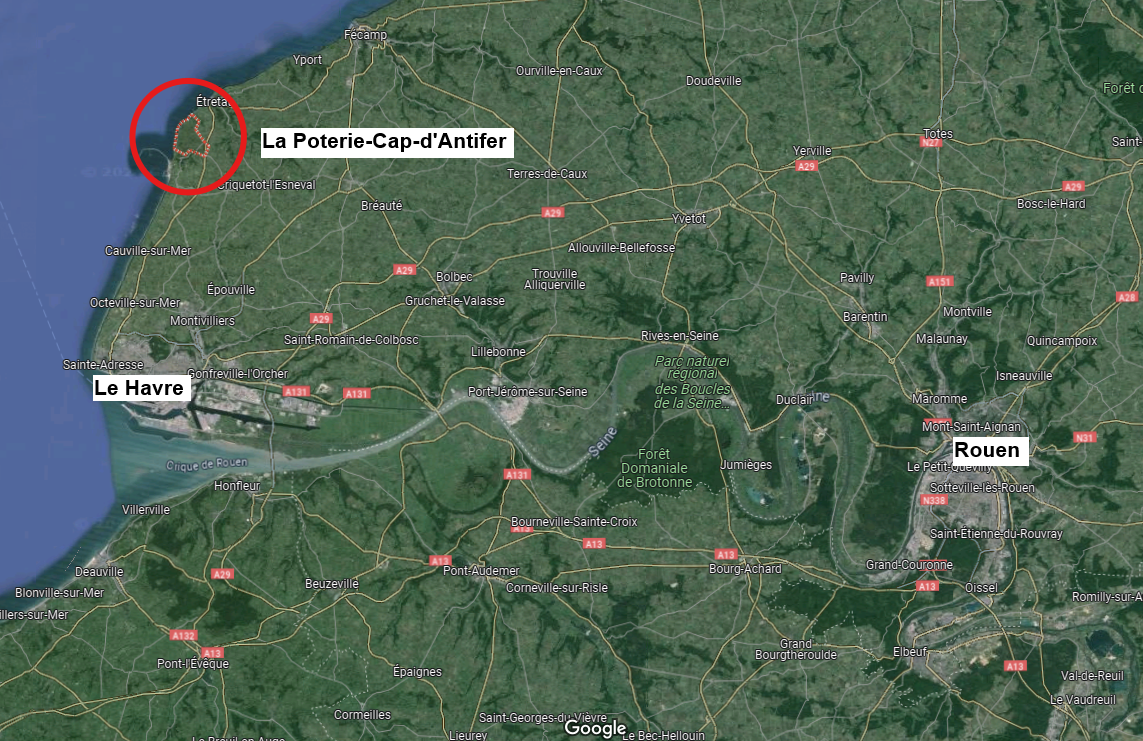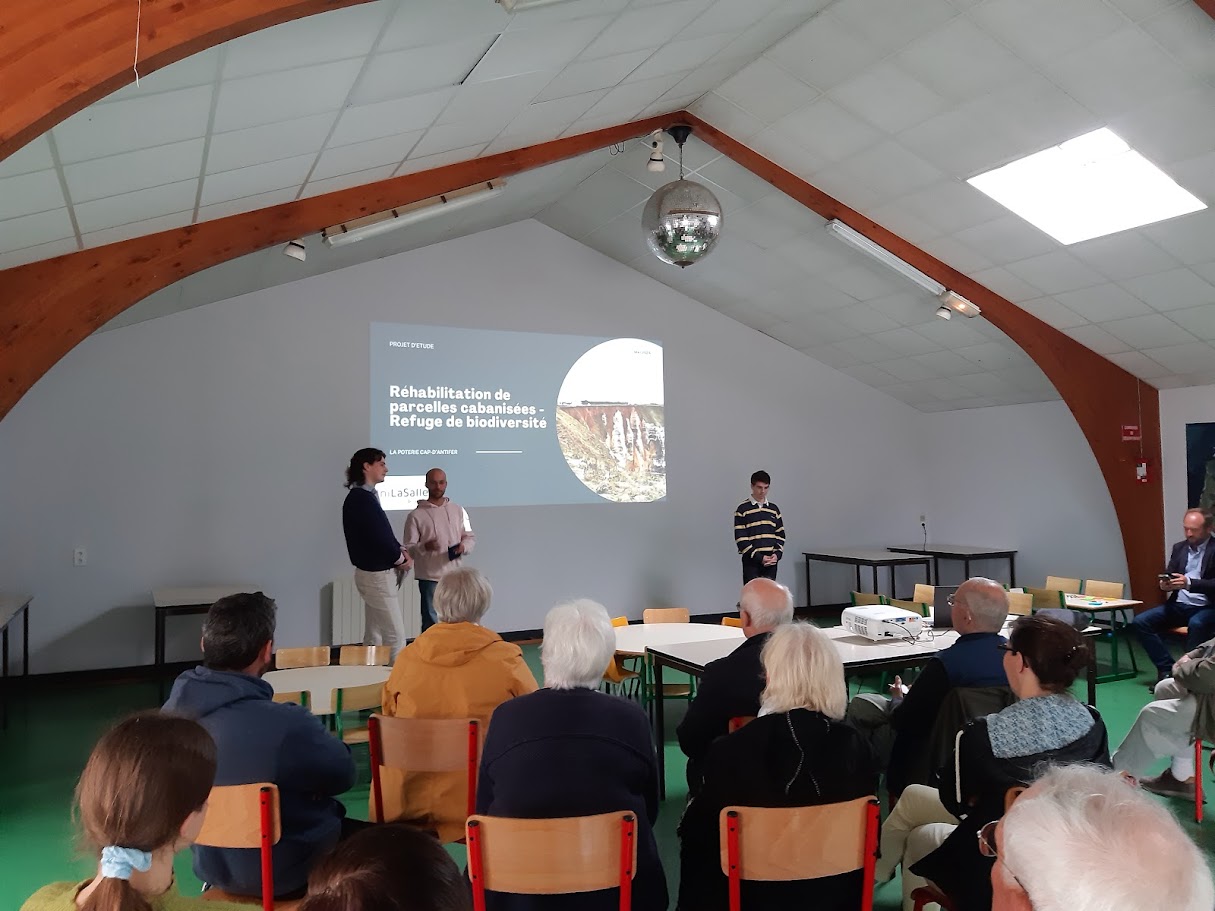A group of i-SAFE engineering students on the Farming For the Future course worked for a year to help the village of La Poterie-Cap-d 'Antifer deal with a little-known problem: cabanization. Find out more about the concept, the issues at stake and our students' feedback following their final project presentation to local stakeholders.
The 4th year of the engineering cycle at UniLaSalle Rouen is marked by the “Engineering Project” teaching unit, the aim of which is to give our students an advanced taste of engineering. They are given a year-long project, which they will follow up with local players until it is completed. For Maximilien, Pierrick, Amaury and Candice, the project that marked their year was that of the Refuge de Biodiversité (also known as the Projet Haies), aimed at rehabilitating cabanized areas at La Poterie-Cap-D' Antifer.
La Poterie-Cap-d 'Antifer, a project on a human scale
The aim of this project is to convert a “cabanized” plot of land in the village into a biodiversity refuge, using agricultural hedges in particular. Cabanization is a problem that has plagued La Poterie-Cap-D 'Antifer for over two years, involving the unauthorized installation of various structures, temporary or permanent, in areas that are usually agricultural or natural. For example, one of the plots studied was being used, without authorization, as a grazing area for goats. 🐐.
A problematic phenomenon, both in terms of its impact on biodiversity and on the health and safety of local residents. “It was very difficult to realize the scope of the project,” explains Maximilien, “at the beginning, we were very focused on the hedgerow part of the project, when the real issue was access to and reacquisition of the land”. To support them, they were able to count on the support of a wide range of committed players, including Mr. Lethuilier, the local mayor.
It was a truly collaborative project, involving players at all levels. The students were able to count on the support of the SAFER (Société d'Aménagement Foncier et d'Établissement Rural), the chambers of agriculture, the AFAC (Association Française des Arbres Champêtres et agroforesteries) and the DGALN (Direction Générale de l'Aménagement du Logement et de la Nature) for the mobilization of the green fund in particular. A key element of the project, which would finance a large part of it, is a fund aimed at accelerating the ecological transition of territories. Amaury sums it up for us: “Our project is really about recomposing the land, creating a link between the town hall, the various public players and the residents”.

It was a continuous effort for our 4 engineering students, who had to learn fast to keep up with the reality on the ground! "It was an interesting and concrete project, beyond the project of planting hedgerows for biodiversity, the diversity of actors involved made the subject tangible and motivating", Pierrick tells us. "However, we sometimes felt overwhelmed by the amount of work involved and the practical challenges involved: we needed authorizations to do everything!" A real experience in the field for our young people, who surpassed themselves in carrying out the various missions.
This project began last year with another group of students, and this year it has been brought to fruition by another class on the same Farming For the Future course. “The aim,” explains Amaury, “was to follow on from last year's projects, with the primary objective of developing biodiversity through hedgerows on the commune's territory.” It was a difficult undertaking, but in the end it paid off! Not least because of the mayor's constant support, a decisive factor underlined by Maximilien: “We were lucky to have very good support, Mr. Lethuilier helped us a lot to understand the issues and the players involved in the project”.
On May 21, the mayor of La Poterie-Cap-d'Antifer invited our group of students to present the final project to a group of elected officials, to ensure that the solution met the expectations of the commune's citizens. Mrs Florence Durande, vice-president of the Seine-Maritime department, was present, as were several mayors and municipal councillors from the Le Havre Seine Métropole urban community. For our future engineers, it was a further step in putting their work into practice.
Through their work, they presented several solutions for dealing with the problem of “cabanisation”, including one that particularly interested the elected representatives. In fact, they imagined an eco-productive plot, including an orchard surrounding the plot, with a hedge segmenting the inhabited zone and the natural zone; this to dedicate part of the plot to agriculture, and part to the commune for renaturation.

The inclusion of concrete, meaningful projects in the engineering curriculum is the key to training engineers who are sensitive to local issues, as Marie-Pierre-Bruyant, a teacher-researcher at UniLaSalle Rouen, in charge of monitoring this group, explains:
“This project is a true illustration of the philosophy of the Farming For The Future course, to be at the service of territories, both nationally and internationally.”
More information on the Farming For the Future course
An article written by Jules Houplon, engineering student at UniLaSalle Rouen.






